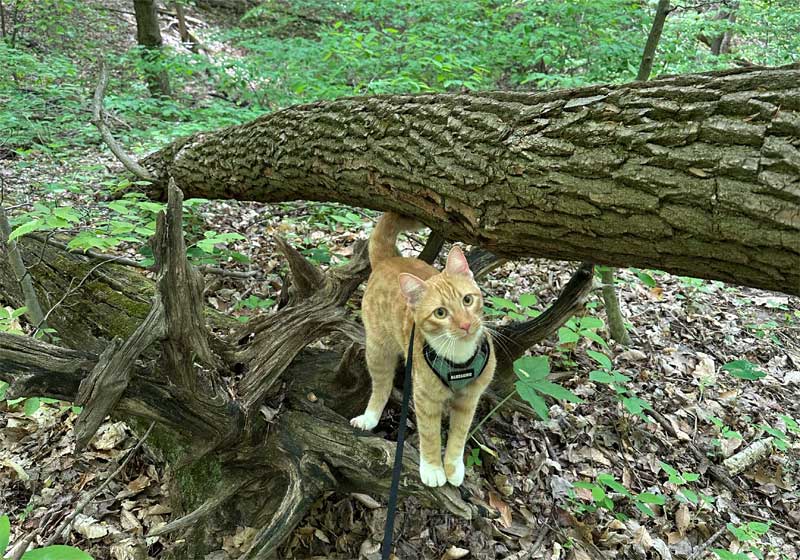Think traveling with cats in a truck camper is impossible? One clever modification turned a cramped dinette into a feline fortress, solving space, scratching, and sanity all at once. Alien tape is the MVP!

When I hit the road in my 2024 Lance 825 and Chevy Silverado 3500, I expected to make a few adjustments for my feline travel companions. What I didn’t expect was just how much I’d have to rethink the camper’s interior to make it safe, comfortable, and enriching for them. Along the way, I’ve learned a lot about traveling with cats and creating a space that works for all of us.
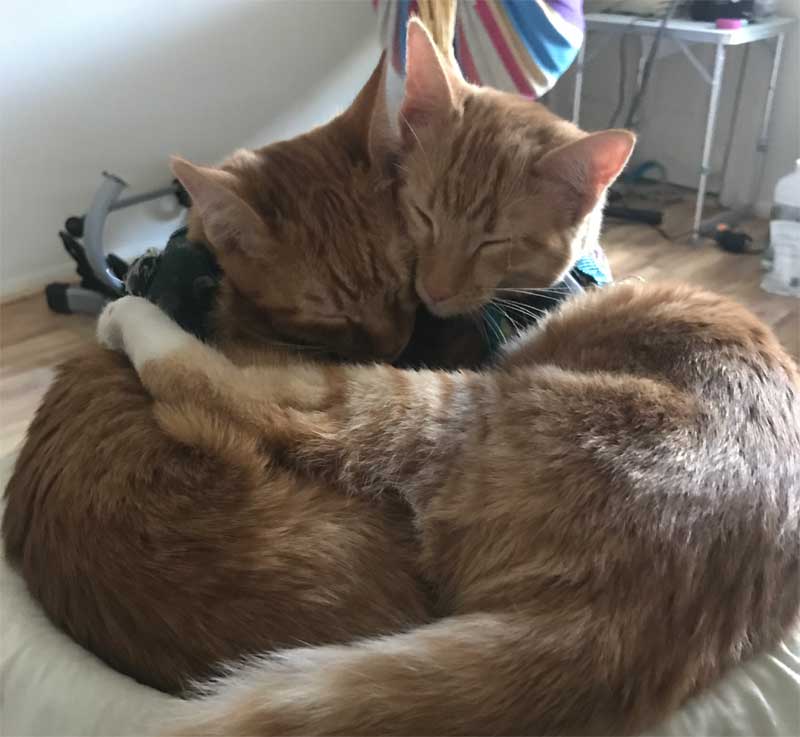
Above: Theo and Niko snuggled up
Theo is a bold, loving orange tabby born in June 2023. His brother, Niko, was quieter and more cautious. They were leash trained early, but in March, while walking in Patapsco Valley State Park, Niko got startled and escaped. Despite using Dogs Finding Dogs to track him, Niko settled at a nearby rescue farm. They won’t let me reclaim him, and it’s heartbreaking.
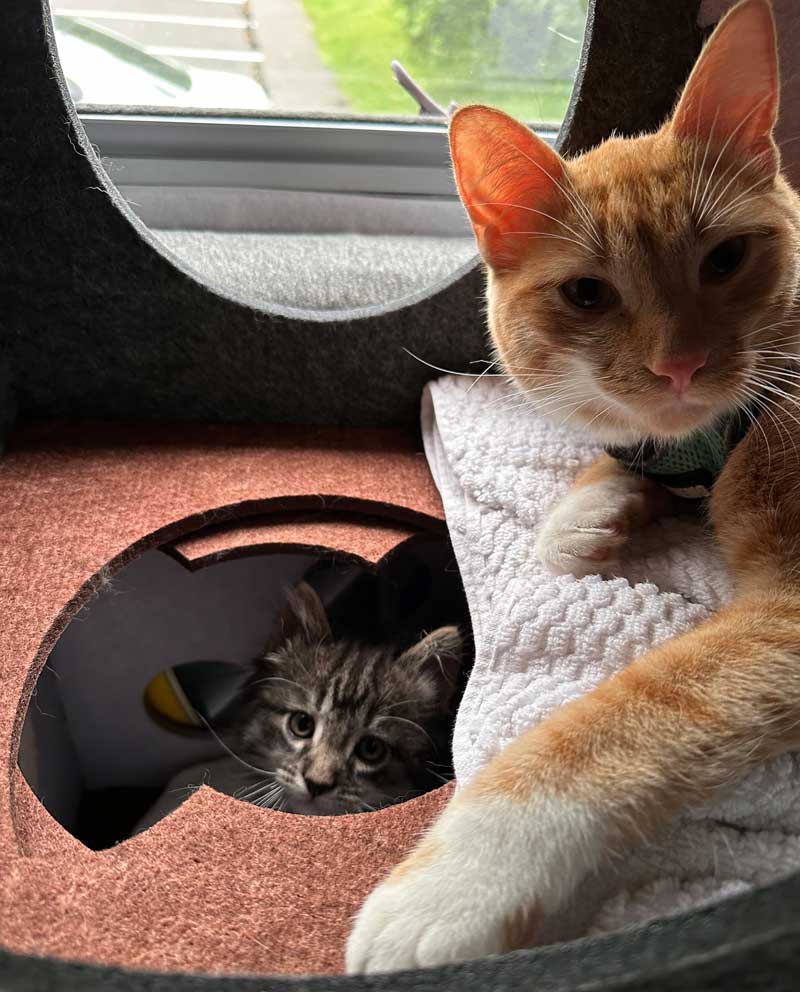
Above: Theo and Hiro in the cat center
Theo was devastated. Without Niko to help burn energy, he became destructive, scratching at windows and trying to escape. That’s when Hiro entered the picture. Too young to be away from his mother, Hiro came to us under difficult circumstances, but he quickly bonded with Theo. Within days, they were sharing a kennel peacefully. Since Hiro’s arrival, Theo hasn’t tried to break out once.
After trying out a series of cat trees, condos, and beds, each was either too bulky, unstable, or ill-fitting. I finally found a winner on Amazon: modular cat furniture made from dense, felt-like panels.
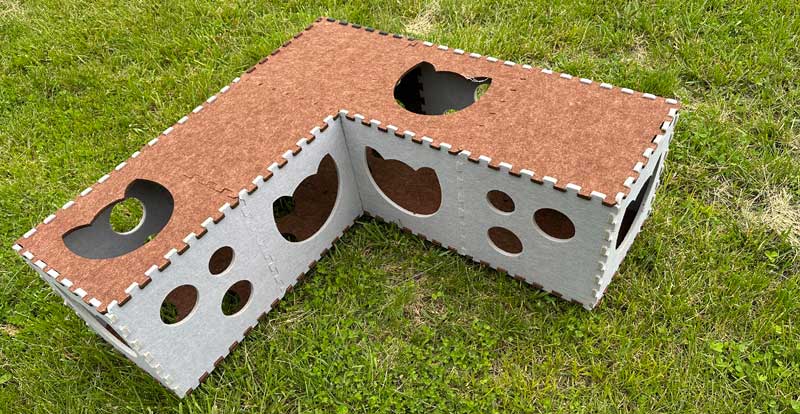
These 12-inch square panels snap together like puzzle pieces. I used them to build two L-shaped “cat centers” that nest perfectly around the dinette table, hugging the corner tightly enough to stay in place even while driving.
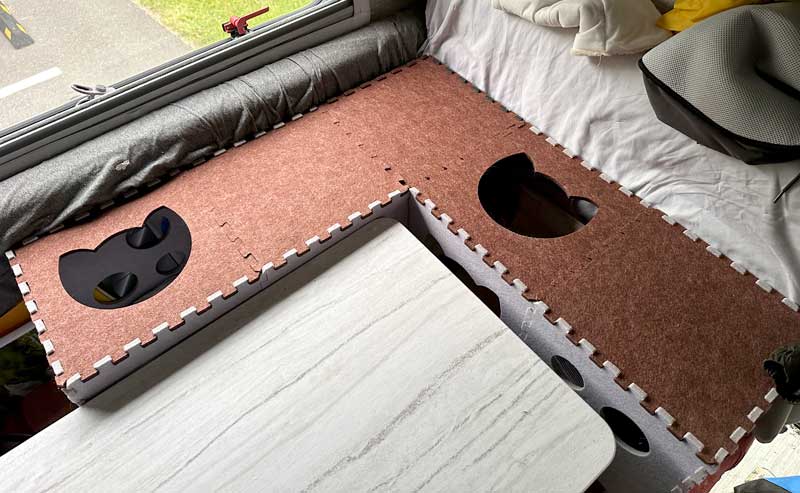
Each level has its purpose. One is positioned so the cats can look out the window; the other has a heated cat bed (pictured below) for colder days.
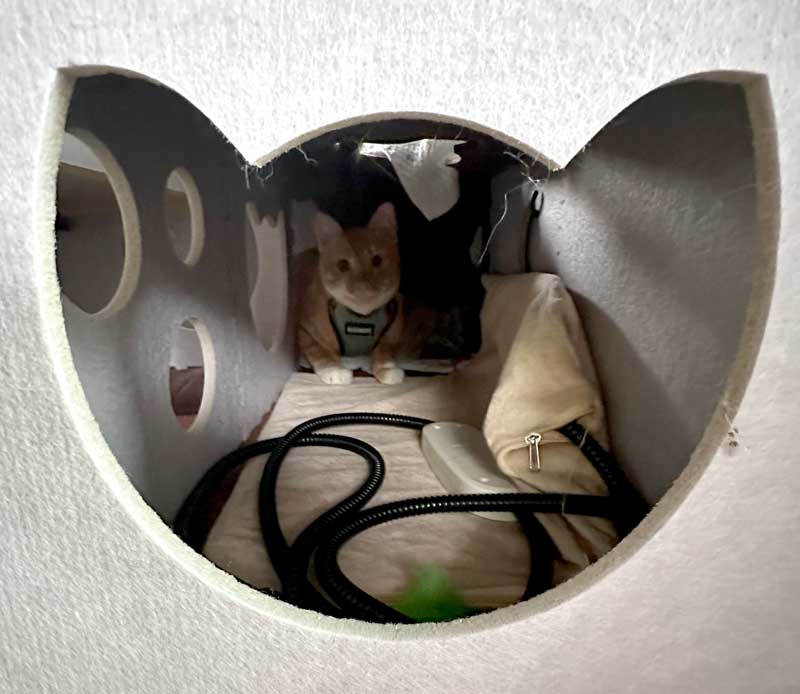
I added a sisal scratching pad inside and used Alien tape to keep their beds in place. The panels are lightweight, soft on surfaces, and don’t shift around. They’ve proven ideal for a mobile feline lifestyle.
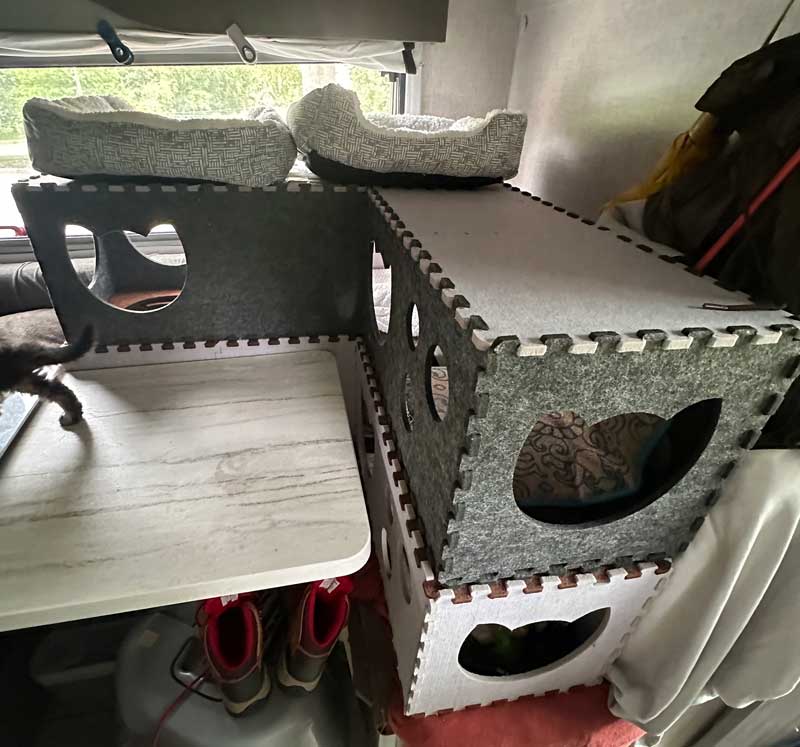
Traditional cat trees and collapsible boxes wobbled and wore down quickly. I needed something secure and adaptable to the tight camper dimensions. These modular panels were the first solution that didn’t require jamming into corners or result in toppled towers at every curve in the road.
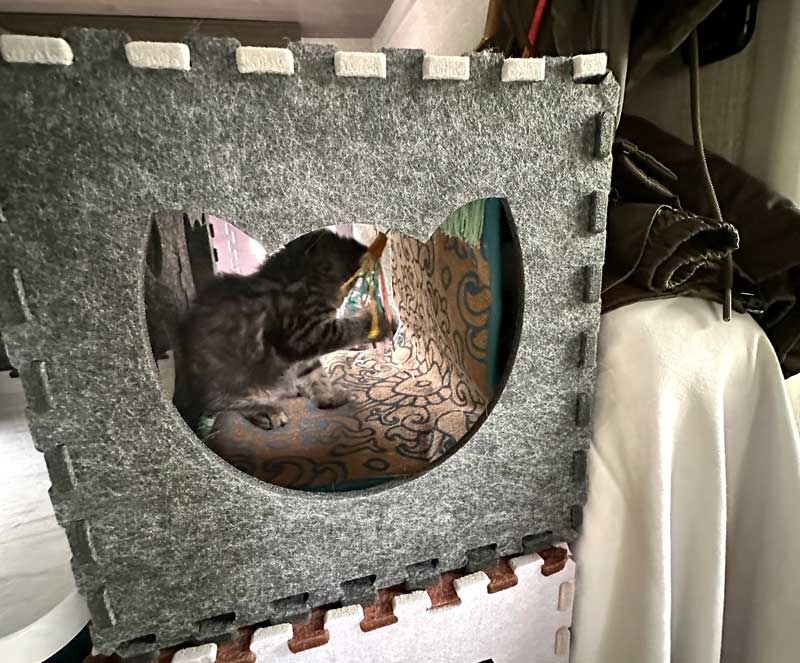
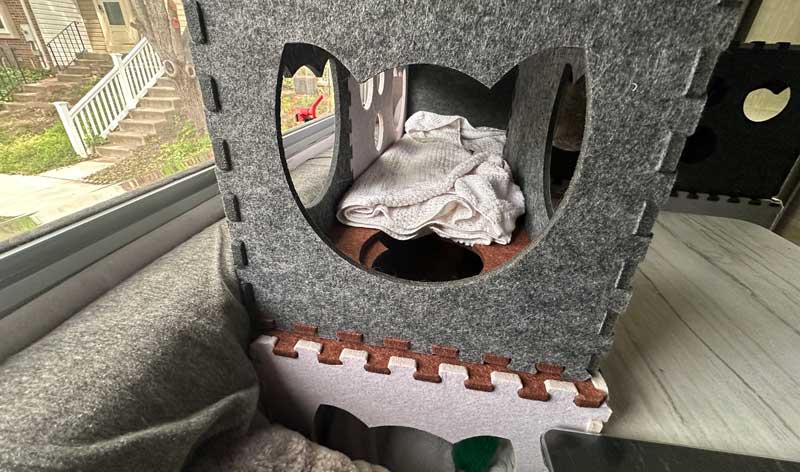
The tunnel-like structure gives my cats everything they need: quiet spaces, viewing holes, and multiple levels to climb, scratch, nap, or just observe.
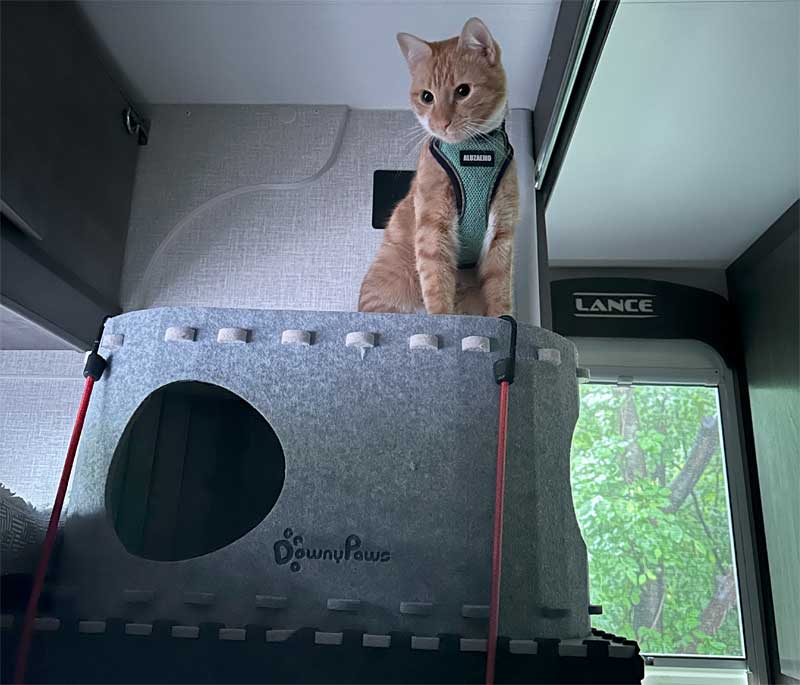
Theo, my more adventurous cat, especially loves his upper-level perch. The perch is now bungied in place after it started flying off mid-drive.
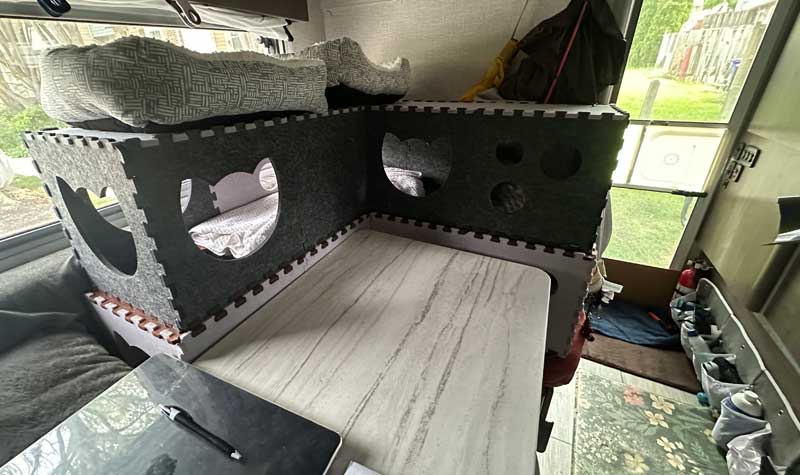
Designing around the U-shaped dinette wasn’t easy, but the L-shape wraps around half the seating area without interfering with human space. The panels’ grip and their close fit around the table prevent them from sliding. They’re light enough to move to the bed if I need extra room and easy to assemble, even with my arthritis.
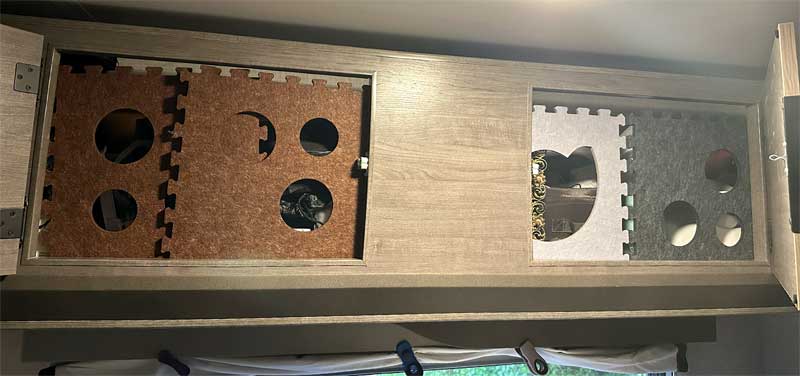
Bonus: Leftover panels now serve as shock absorbers inside overhead cabinets (pictured above). There are no more surprises when I open a door after a bumpy ride. They keep items from shifting enough to pop the cabinets open. It was a small fix.
Lesson #1: Always provide scratching alternatives. My cats will shred anything that isn’t plastic. I now keep multiple scratchers and trim their claws weekly. A small book holder behind the dinette stores their grooming gear.
Lesson #2: Curtains are a no-go. I sewed custom blackout curtains, only to have the cats tear them down. Cardboard works better and doubles as a safety feature—if anything shifts while driving, it’s less likely to push through a window.
Lesson #3: Hide the toys. Theo can open every cabinet but the microwave. That’s where I stash his fishing pole toy—unless I want a full-blown feline freak-out.
Theo is obsessed with walking. Parks are our go-to: city parks, dog parks, even the grassy areas under overpasses. If I can’t find a park, schools often have green spaces or lit areas for safe night walks. No walks? Expect tantrums. He cries, pouts, and climbs the walls—literally.
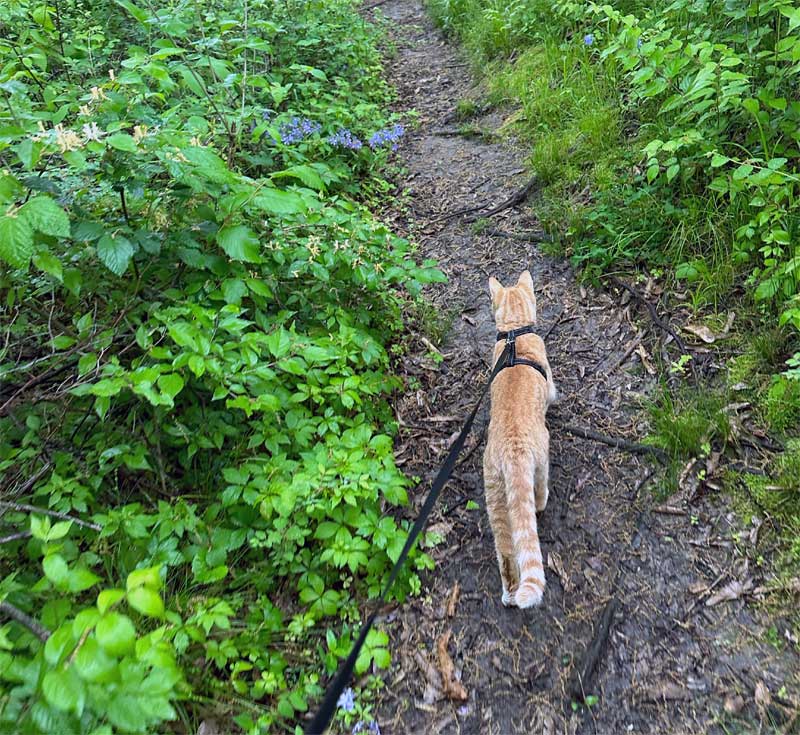
Walks range from exploring a 20-foot stretch of grass to chasing ants for an hour. If a squirrel or butterfly appears, all bets are off. He’s a cat of strong opinions and boundless curiosity. I won’t leash Hiro until I’m confident he’s ready and reliable. And he’ll have a GPS tracker and microchip, like Theo.
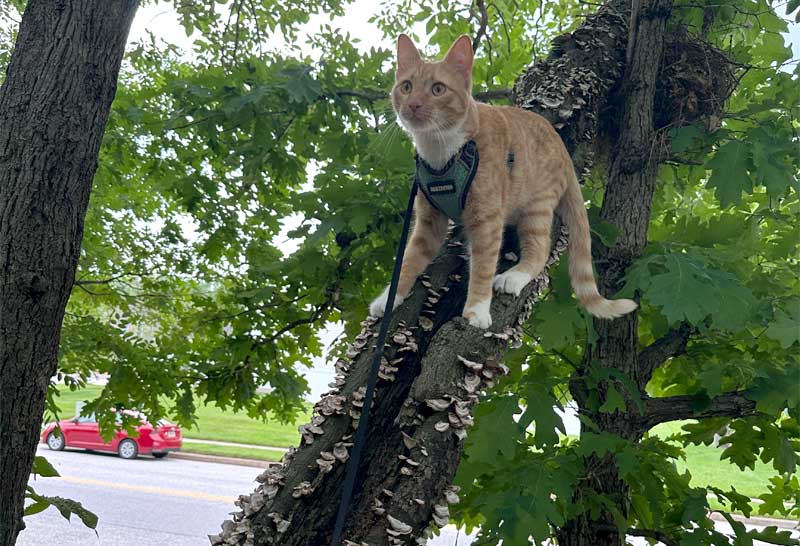
To preserve my cushions, I covered everything in old towels. I plan to make fitted cases when I’m home longer. There are no curtains, as mentioned, but cardboard panels now block bedroom windows the cats don’t know exist.
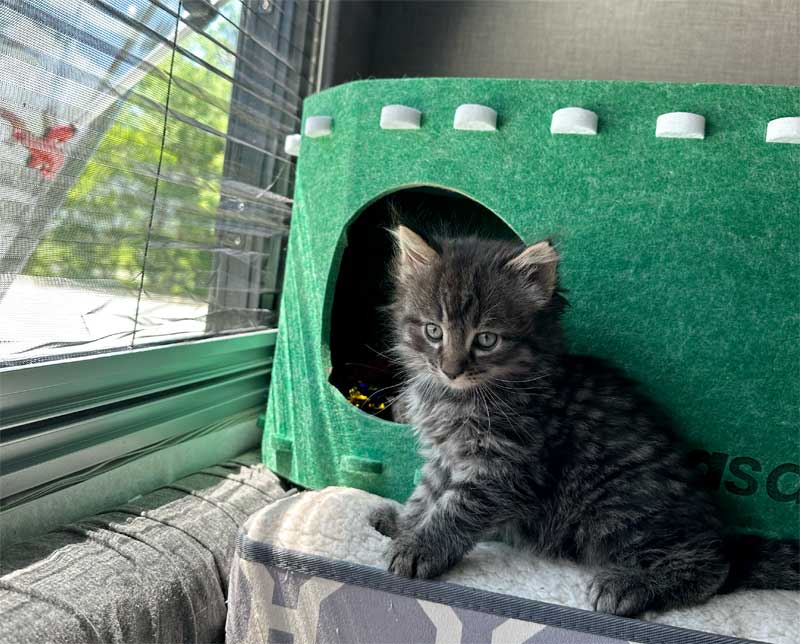
I also made a few quirky adaptations: a dishwasher silverware holder is Alien-taped to the stove to hold spices. Alien tape is my MVP—it’s how I keep things mounted but movable. The cats can walk, climb, and scratch freely, but they’re not destroying the place.
Even small discoveries help, like bulk litter refills at Petco. I bought a reusable container and top it off, cutting down on waste. Internet? I park at libraries with public Wi-Fi so the cats aren’t left alone while I work or shop.
Building the “cat center” into my Lance camper gave my cats stability, stimulation, and security. It’s more than just a climbing toy; it’s their sanctuary, their lookout post, and sometimes, their therapist’s office.
Traveling solo with cats isn’t easy, but with the right modifications, it’s entirely doable and incredibly rewarding. My camper isn’t pristine, but it’s full of life, paw prints, and stories. And that’s exactly how I want it.
